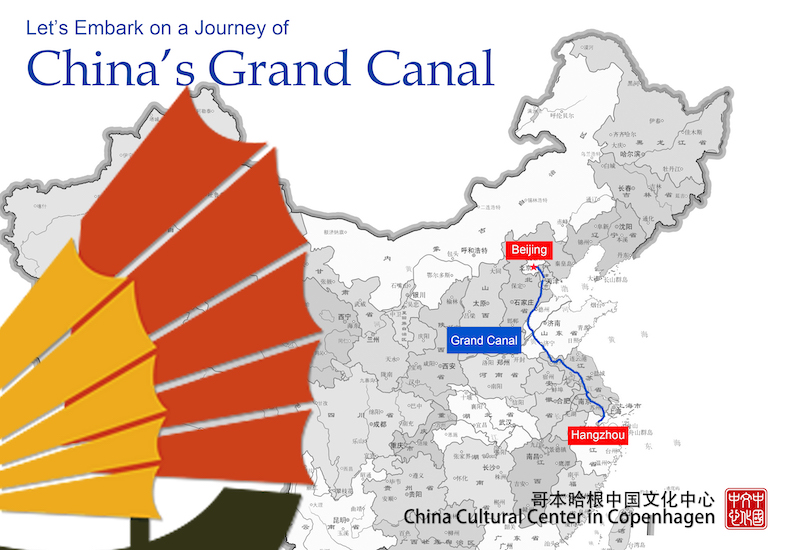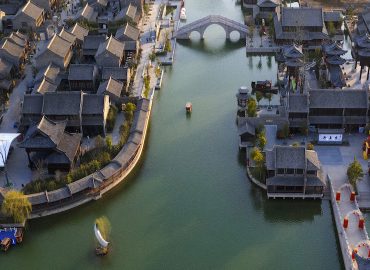The Grand Canal is a vast waterway system in the eastern plains of China, running from Beijing in the north to Zhejiang province in the south. It is the world’s longest, oldest, and largest man-made canal.
The canal was initially built in 486 BC and has been in use for 2,500 years. It consisted of three parts, namely the Sui–Tang Grand Canal, which was constructed in Sui and Tang Dynasties (581-907 AC), the Beijing–Hangzhou Grand Canal, and the Zhedong Canal, with a total length of 2,700 kilometers. The present canal, based on Beijing- Hangzhou Canal in history, starts in Beijing and passes through the city of Tianjin and the provinces of Hebei, Shandong, Henan, Anhui, Jiangsu, and Zhejiang to the city of Hangzhou, linking the five great rivers; the Hai River, the Yellow River, the Huai River, the Yangtze River, and the Qiantang River. It served as the primary route for the transportation of goods between the north and the south in ancient China.

On June 22th, 2014, the 38th session of UNESCO World Heritage’s committee announced the Grand Canal as a UNESCO World Heritage Site, becoming the 46th World Heritage Site in China.
The “China’s Grand Canal Overseas Tourism Promotion Season 2022” will officially begin on July 20, and will continue until August 20, 2022. The event will be hosted online, where each day we will expose you to an intriguing program about China’s Grand Canal, including the promotion of local cultural and tourism projects, the screening of documentaries about intangible cultural heritage, photo exhibitions, and much more. Stay tuned to our website and social media platforms.
[DANISH]
Den Store Kanal, også kaldt Kejserkanalen, er et stort vandvejssystem i Kinas østlige sletter, der løber fra Beijing i nord til Zhejiang-provinsen i syd. Den er verdens længste, ældste og største menneskeskabte kanal.
Kanalen blev oprindeligt bygget i 486 f.Kr. og har været i brug i 2.500 år. Den bestod af tre dele, nemlig Sui-Tang kanalen, der blev konstrueret under Sui- og Tang-dynastiet (581-907), Beijing-Hangzhou kanalen og Zhedong kanalen, med en samlet længde på 2.700 kilometer. Den nuværende kanal (Beijing-Hangzhou kanal) starter i Beijing og løber gennem byen Tianjin og provinserne Hebei, Shandong, Henan, Anhui, Jiangsu og Zhejiang til byen Hangzhou, og forbinder de fem store floder; Hai-floden, Den Gule Flod, Huai-floden, Yangtze-floden og Qiantang-floden. Kanalen tjente som den primære rute for transport af goder mellem nord og syd i de gamle dage i Kina.
Den 22. juni 2014 annoncerede UNESCOs verdensarvskomitéens 38. session, at Kejserkanalen er et UNESCO verdensarvssted, hvilket blev det 46. verdensarvssted i Kina.
Den 20. juli bliver eventet “China’s Grand Canal Overseas Tourism Promotion Season 2022” officielt skudt i gang og vil fortsætte helt frem til den 20. august 2022. Eventet vil blive afholdt online, hvor vi hver dag vil introducere dig for et spændende program om Kinas Kejserkanal herunder fremme af lokale kultur- og turismeprojekter, visning af dokumentarfilm om immateriel kulturarv, fotoudstillinger og meget mere. Følg med på vores hjemmeside og sociale medier.





